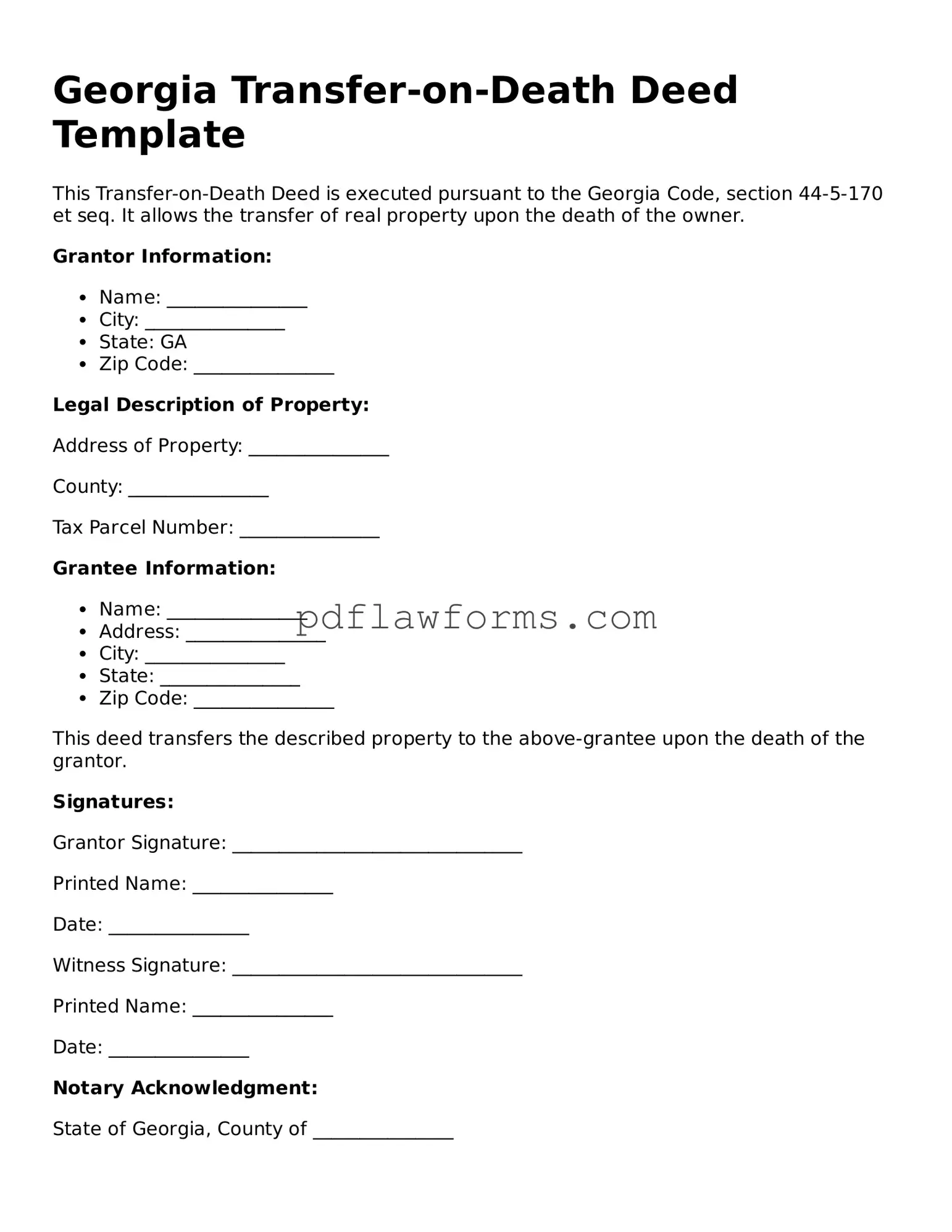Filling out a Georgia Transfer-on-Death Deed form can seem straightforward, but many individuals make common mistakes that can lead to complications down the line. One frequent error is failing to properly identify the property. It's crucial to provide a clear and accurate legal description of the property being transferred. This includes not only the address but also the parcel number and any other identifiers that can help avoid confusion. Omitting this information can result in the deed being deemed invalid.
Another mistake occurs when individuals neglect to include all required signatures. In Georgia, both the grantor and the grantee must sign the deed. If there are multiple beneficiaries, it’s essential that all of them are included and sign the document. A missing signature can invalidate the entire deed, leaving the property in limbo and potentially causing disputes among heirs.
People often overlook the importance of notarization. A Transfer-on-Death Deed must be notarized to be legally binding. Without a notary's signature and seal, the deed may not hold up in court. This step is crucial and should not be skipped, as it ensures that the document is recognized by the state.
Additionally, many individuals fail to file the deed with the appropriate county office. After completing the form, it is not enough to simply have it signed and notarized; the deed must be recorded with the county clerk's office where the property is located. This step is essential to provide public notice of the transfer and to protect the rights of the beneficiaries. Failing to file the deed can lead to confusion and disputes regarding ownership.
Finally, a common oversight is not updating the deed after significant life events. Changes in relationships, such as marriage, divorce, or the death of a beneficiary, should prompt a review and possible revision of the deed. If the deed is not updated, it may not reflect the current wishes of the property owner, leading to unintended consequences. Regularly reviewing estate documents can help ensure that they align with one’s current intentions.
